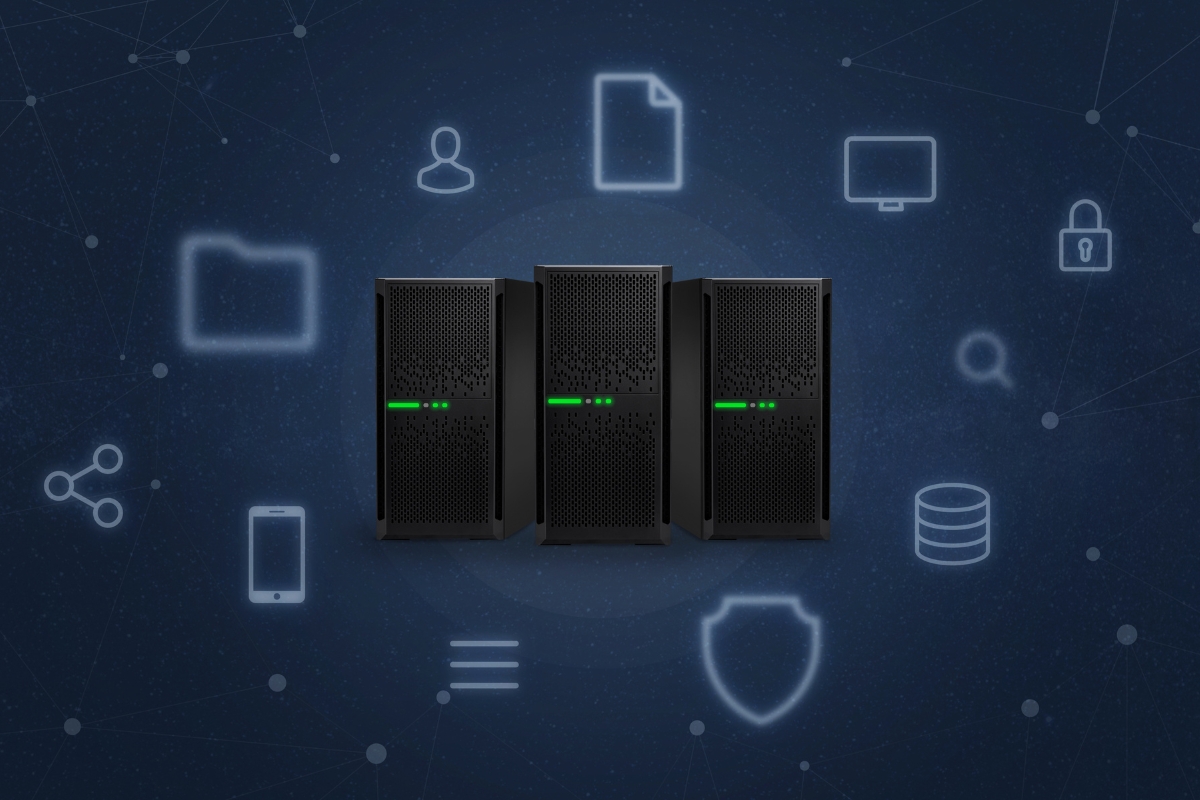In today’s digital era of lightning-fast internet speeds and on-demand content, the term “CDN” is making its way into our tech vocabularies more prominently. But what exactly is a CDN?
From accelerating website speeds to enhancing user experiences, CDNs have revolutionized the way we consume online content. So, buckle up as we delve into the enchanting world of CDNs, unraveling the spellbinding technology that underpins the digital realm we navigate daily.
Let’s demystify the captivating journey of what is a CDN and illuminate the captivating magic behind these omnipresent content delivery networks.
What Is a CDN and Why Do You Need It for Faster Website Performance?
The Evolution of Content Delivery Networks

The birth of content delivery networks (CDNs) can be traced back to the late 1990’s when the internet witnessed an exponential growth in online content consumption. As websites started incorporating multimedia elements like images, videos, and audio, the traditional infrastructure struggled to efficiently deliver these assets to users. This led to slower loading times, frustrating user experiences, and overwhelmed web servers.
Recognizing the need for a solution, a few tech pioneers introduced the concept of CDNs. Akamai Technologies, one of the early champions of CDNs, emerged in 1998 and revolutionized the way content was distributed across the internet. They built a vast network of geographically distributed servers strategically positioned near internet nodes.
Over time, CDNs evolved in response to the increasing demands of the digital landscape. As internet speeds improved and mobile devices became ubiquitous, CDNs adapted to optimize the delivery of content across different devices and networks. They began incorporating advanced technologies such as dynamic content caching, image optimization, and video streaming capabilities.
Global tech giants like Amazon Web Services (AWS) and Cloudflare joined the CDN market, expanding the reach and capabilities of CDNs even further. Today, CDNs have become an integral part of the internet infrastructure, serving billions of users worldwide. They continue to evolve with the rise of new technologies like edge computing, which brings computation and storage closer to the end-users, further enhancing performance and reducing latency.
The evolution of CDNs has revolutionized the way digital content is delivered, making it faster, more reliable, and scalable. Businesses across various industries now rely on CDNs to meet the demands of their online audiences and provide seamless customer experiences.
How CDNs Work Their Magic: An Overview

CDNs work their magic by leveraging a network of geographically distributed servers strategically placed at strategic points across the globe. This network, often referred to as the CDN infrastructure, acts as a distributed cache for website content, storing copies of files like images, videos, and HTML documents. When a user requests content from a website that utilizes a CDN, the CDN automatically determines the nearest server to the user and delivers the content from that server.
This process significantly improves website performance and loading times. By having multiple servers spread across various locations, CDNs reduce the distance between users and the content they request, minimizing latency and reducing the time it takes for content to reach the user’s device.
Additionally, CDNs employ advanced web caching techniques to store static content and dynamically adjust caching settings based on user demand. This helps alleviate the load on origin servers, distribute bandwidth effectively, and ensure a seamless user experience even during periods of high traffic.
Major CDNs like Cloudflare, Akamai, and Fastly have developed sophisticated algorithms and optimization techniques to deliver content efficiently across their networks. Through intelligent routing, load balancing, and content prioritization, CDNs work their magic to enhance website performance, enhance user experience, and support the ever-growing demand for online content.
Benefits of Using CDNs for Website Performance

When it comes to website performance, one of the most effective tools at your disposal is a Content Delivery Network (CDN). CDNs are a powerful solution that can significantly enhance the speed and reliability of your website, providing a range of benefits for businesses of all sizes.
First and foremost, CDNs help to improve the user experience by reducing latency and load times. By distributing your website’s content across multiple servers located in different geographic regions, CDNs ensure that visitors can access your site quickly, regardless of their location. This means faster page load times, improved navigation, and ultimately, happier users.
In addition, CDNs also help to mitigate the impact of traffic spikes and bandwidth limitations. By offloading content delivery to a network of servers, CDNs reduce the strain on your origin server, ensuring that it can handle sudden surges in traffic without slowing down or crashing.
Furthermore, CDNs offer added security benefits. With features such as DDoS protection, secure token-based authentication, and SSL/TLS encryption, CDNs help to safeguard your website and protect it from malicious attacks, ensuring the trust and confidence of your customers.
By utilizing a CDN, you can optimize your website’s performance, deliver a seamless user experience, and enhance the security of your online presence. It’s a practical and effective solution that can give your business a competitive edge in the digital landscape.
Types of Content Delivery Networks: Exploring the Options

When it comes to content delivery networks (CDNs), there are various options available, each with its own unique features and capabilities. Let’s explore some of the types of CDNs and what they offer:
- Standard CDN: This is the most common type of CDN, which focuses on caching and delivering static content efficiently. It’s suitable for websites with predominantly static content, such as images, videos, and CSS files.
- Video CDN: As the name suggests, this type specializes in delivering video content. Video CDNs use adaptive bitrate streaming and video optimization techniques to ensure smooth playback, reduce buffering, and provide an excellent user experience for video streaming platforms.
- Dynamic CDN: Unlike standard CDNs, dynamic CDNs can handle more complex content, including dynamic and personalized web pages. These CDNs integrate with content management systems and dynamically cache content based on user requests, allowing for faster loading times of dynamic content.
- Mobile CDN: Designed specifically for mobile devices, mobile CDNs optimize content for mobile networks, reducing data usage and improving performance on smartphones and tablets.
- Hybrid CDN: Hybrid CDNs combine the capabilities of multiple CDN types, offering a comprehensive solution that caters to diverse content delivery needs. They combine static caching, video optimization, dynamic content delivery, and mobile optimization for maximum performance and flexibility.
By understanding the different types of CDNs available, businesses can select the one that aligns with their content and performance requirements. Whether it’s catering to videos, dynamic content, or mobile users, there’s a CDN out there to optimize the delivery of your content and elevate your website’s performance.
CDN vs Traditional Web Hosting: Understanding the Difference

In online content delivery, there are two main options: using a Content Delivery Network (CDN) or traditional web hosting. Understanding the difference between these approaches is key to optimizing website performance and user experiences.
Traditional web hosting typically involves hosting your website on a single server located in a specific geographic location. When users access your site, they connect directly to that server, which may result in slower loading times for users who are physically far away from the server. This can be a disadvantage when it comes to global reach and providing a seamless user experience.
On the other hand, CDNs offer a distributed and decentralized approach. They use a network of servers located in multiple geographic locations, allowing content to be delivered from the server that is closest to the user. This reduces latency and improves loading times, resulting in faster and more reliable content delivery.
CDNs also offer additional benefits such as load balancing, caching, and security features, which traditional web hosting may lack. By offloading content delivery to a CDN, businesses can ensure optimal performance, scalability, and global accessibility for their websites and applications.
In summary, while traditional web hosting is suitable for certain scenarios, CDNs provide a more efficient and effective solution for delivering content worldwide, optimizing performance, and providing an exceptional user experience.
Security Features of CDNs: Safeguarding Your Content

Providing robust security measures is a crucial aspect of any online business, and Content Delivery Networks (CDNs) offer a range of security features to safeguard your content and protect your website from malicious attacks. Let’s explore some of the key security features offered by CDNs:
- DDoS Protection: CDNs often provide built-in Distributed Denial of Service (DDoS) protection, which helps mitigate and absorb the impact of volumetric attacks that can overwhelm your website’s servers. By distributing traffic across multiple servers, CDNs can detect and filter out malicious traffic, ensuring that your website remains accessible to legitimate users.
- Web Application Firewall (WAF): CDNs can include Web Application Firewall capabilities that help protect against common web-based attacks, such as SQL injections and cross-site scripting. WAFs analyze incoming traffic and block any suspicious requests, helping to safeguard your website’s applications and databases from unauthorized access.
- Secure Token-Based Authentication: Many CDNs offer secure token-based authentication mechanisms to ensure only authorized users can access your content. These tokens are generated for each user session, providing an extra layer of security and preventing unauthorized access to your content.
- SSL/TLS Encryption: CDNs can enable SSL/TLS encryption, ensuring that data transmitted between your website and its visitors remains secure and protected from eavesdropping or tampering. By establishing a secure connection, CDNs help boost user trust and protect sensitive information.
- Two-Factor Authentication (2FA): Some CDNs may support Two-Factor Authentication, which adds an extra layer of security to the login process. By requiring users to provide a second form of authentication, such as a unique code from an authentication app or a text message, CDNs help prevent unauthorized access even if login credentials are compromised.
By leveraging the security features provided by CDNs, businesses can enhance the protection of their online content, build trust with their customers, and reduce the risk of data breaches or cyberattacks. It’s an essential measure in today’s digital landscape, where security is paramount.
Conclusion: Unveiling the Wizardry of CDNs
CDNs are the unsung heroes of the internet, working tirelessly behind the scenes to deliver content quickly, reliably, and securely to users worldwide. By leveraging the power of geographically dispersed servers, CDNs are able to minimize latency, handle traffic spikes, and enhance website performance.
Don’t let slow loading times or unreliable content delivery hold your website back – reach out to Newman Web Solutions today and let us help you unlock the full potential of your online presence. Reach us at (404) 301-9189 or schedule a 30-minute free marketing strategy session and discover how we can tailor our website hosting and marketing solutions to meet your specific needs.






